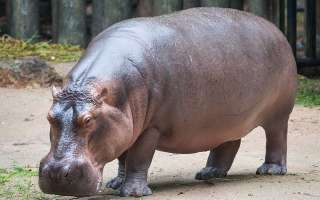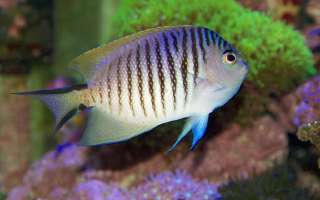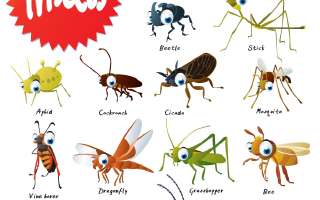This section is focused on our earth! Find out planet secrets, from rainforests to sea turtles. Be a science sleuth and track our planet earth — oceans, mountains, places, nature, global warming, pollution, the natural world and much more. Amazing facts and unusual behaviour of reptiles, insects, animals, birds, rainforests… Come in and join our Earth Science for Kids club.
113 items in this section. Displaying page 1 of 12
Penguin Sweaters
Oil spills can have a devastating effect on marine life. After an oil spill, one of the most important jobs of rescuers is to fish out oil soaked birds and animals, clean them and rehabilitate them before releasing them into the wild again. Recently, after an oil spill in the Australian waters, environmentalists claimed that the oil slicks were threatening the existence of the little blue penguins in the south of Australia. These tiny, blue-backed penguins are barely 41 centimetres in height – half the height of the world’s biggest, and famous Emperor penguins of Antarctica....
Fish That Live in the Desert
We all know that fish live in water. But, there is a kind of fish which lives in the desert. Difficult to believe? Well, there is a variety of fish called the lungfish, which are found in Africa. When the rivers overflow, their water spreads to the dry regions around. It forms small lakes or ponds. The fish lives in these ponds. And, when the lakes dry up, the lung fish don’t die. They bury themselves in the wet mud where they can live for months....
King of Fruits – History of Mango!
It is a tree that is green at all times of the year. But it bears fruit in the height of summer. The hotter it is, the sweeter it becomes. And, it seems we humans cannot have enough of this juicy, fleshy fruit, for there are almost 1000 varieties of this king of fruits around the world to please our tongues and eyes. It could be round, almost like a ball, or it could be oval in shape, kidney shaped or just long and thin....
The Exotic Peacock
Come monsoons, and we immediately think about the beautiful peacock, dancing in the rain, with its luscious tail spread out behind it. Undoubtedly one of the most beautiful birds in the world and a native of the Indian sub-continent, it is not surprising that the Peacock was anointed as the national bird of India in 1963. The Exotic Peacock [Illustrations by Neelima Bhushan] Hailing from the pheasant family, these exotic birds are cherished for their colourful plumes and eggs....
The Importance of the Mangrove Forest
Tropical coastlines and marshy areas around the world have one thing in common: mangrove forests. These consist of trees and shrubs that throw out many prop roots and sustain a large variety of aquatic animals, birds and plants. These mangroves form a complete ecosystem. That is, they provide a complete base for all the organisms within that environment to live and thrive. That keeps the balance in the larger environment of which humans are a vital part....
Why is a Hippopotamus called a River Horse?
Among Africa’s unusual creatures is a barrel-shaped gigantic animal, the hippopotamus (plural hippopotami). The hippo is the third largest land animal after the elephant and the rhino. Slightly smaller but heavier than a white rhino, a hippo can weigh nearly 1,800 kg. The animal is huge and barrel shaped nearly 12 feet long and five feet at its shoulder, with a short thick neck and small ears. River Horses [Illustration by Anup Singh] Hippos, or to use their biological name, hippopotamus amphibious literally means ‘river horse’....
Himalayas Have a Deep Impact on the Climate of the World
Tibet is known as the roof of the world. That is because it is on a region which has the highest altitude in the world. The Himalayan mountain range merges into the Tibetan plateau to form this region known as the Himalaya-Tibetan Plateau. Besides being the roof of the world, this plateau also has a deep impact on the climate of the world, says a report published in the May, 2001, edition of Nature, a science and environment journal....
Global Warming: Melting kingdom of the Polar Bear
Through the long and dark Arctic winter, the mother Polar Bear sat quietly in her den. She had given birth to her cubs, and was waiting for them to grow strong enough to follow her out to the ice pack. The ice pack is her refrigerator, the place where she gets her food. It’s quite literally a floating, rotating gyre or “cap” of ice that covers the Earth’s northern pole. Along its edges of cracked and broken ice swims the Polar Bear’s food: ringed seals, bearded seals, harp and hooded seals and, occasionally, carcasses of beached beluga whales, walruses, narwhals, and bowhead whales....
The Fish Which Changes From Female to Male
There is a fish called the blackspot angelfish, which can change from female to male. No, it cannot do it by simply wishing to become male. The change happens for a specific reason. The angel fish live in groups. And each group has one male fish, which is blue in colour, and four female fish, which are yellow in colour. The male angelfish is the strongest and largest member of the group. He is the one who protects and looks after the females and acts like their ‘security guard’....
The Wonderful World of Insects
What is an Insect? Insects are found all over India from the icy Himalayas to the burning sands of the Thar Desert. They are found in the murky depths of rivers and lakes, and in the grass in your neighbourhood park. In fact, insects are everywhere-flying in the air, hidden among leaves and flowers, buried deep in the ground and even swimming in the water! Some insects are so small that you may not be able to see them while others like certain beetles are as big as a mouse....
- ❮ Previous
- Next ❯









